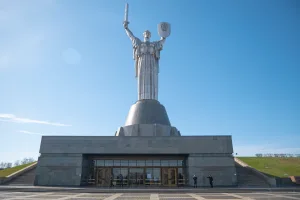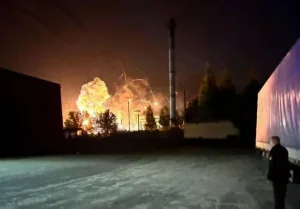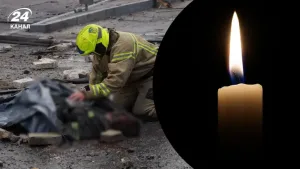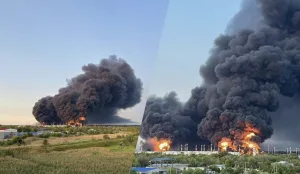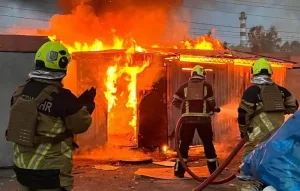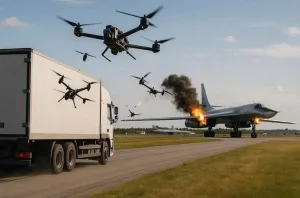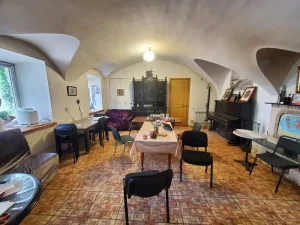Heartbreaking pages of Ukraine’s history or how Russia’s regime wanted Ukrainian culture to be erased.
Throughout Ukraine, it was officially announced that all kobzars from all over the country were invited to Kharkiv, to the All-Ukrainian Kobza Convention. All attendees were required to bring their own banduras because, in addition to the actual congress, there was going to be a creative competition.
It was December 30, 1930 – the opening day of the Congress. Everyone had his music instrument, all dressed in festive embroidery traditional clothes.

Artist Anatoliy Yakymets “The Last Song of the Kobza”
The delegates, 337 people, were kept in the room until evening, and then, under strict supervision, began to be taken to the yard, densely packed in trucks covered with tarpaulins. Just in one hour, all the delegates were jammed in the railway carriages used for animals transportation. They were brought to the outskirts of the rail station Kozach Lopan, then they were taken out of the carriages, and to the nearby forest, where trenches were dug beforehand.
The blind kobzars with their child helpers were up. A detachment of the special department of the NKVD of the Ukrainian SSR began executing.
When everything was finished, the bodies of the victims were thrown into the trenches, covered with lime and layers of soil. All the musical instruments were burned down. The communist Bolshevik ruling elite called the Ukrainian folk musical instruments “class-hostile”.
Soviet authorities ordered the musical factories to make accordions, bayans, and balalaikas instead of authentic Ukrainian banduras.
EMPR
Image credits: na-skryzhalyah
Source: FB.
Tags: Art Culture




